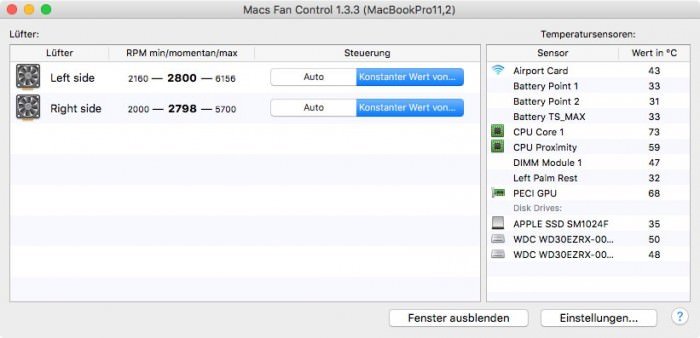 OS X might be the easiest platform to install MySQL on. To do so, simply download the MySQL installation package from the MySQL Download site. I like to use the third link (the DMG). Once downloaded, run the package. The package will ask you a few questions and you can easily just select the default choice during the installation process. Once installed, you’ll be prompted that a temporary password has been used for your MySQL instance. The password will get you in the first time, so you can change it. Once you have documented the password, open System Preferences and click on MySQL in the bottom row of System Preference Panes. Click Start MySQL Server and then when prompted, authenticate to the system. If you’d like to do this programmatically and don’t need the System Preference pane, you can do so with homebrew. If you have homebrew installed, simply run the brew command with the install verb and mysql as the package:
OS X might be the easiest platform to install MySQL on. To do so, simply download the MySQL installation package from the MySQL Download site. I like to use the third link (the DMG). Once downloaded, run the package. The package will ask you a few questions and you can easily just select the default choice during the installation process. Once installed, you’ll be prompted that a temporary password has been used for your MySQL instance. The password will get you in the first time, so you can change it. Once you have documented the password, open System Preferences and click on MySQL in the bottom row of System Preference Panes. Click Start MySQL Server and then when prompted, authenticate to the system. If you’d like to do this programmatically and don’t need the System Preference pane, you can do so with homebrew. If you have homebrew installed, simply run the brew command with the install verb and mysql as the package: brew install mysqlMySQL is again a missing component in OS X 10.10 and needs to be dowloaded from the MySQL site use the Mac OS X ver. 10.9 (x86, 64-bit), DMG Archive version (works on 10.10). The latest version available is MySQL 5.6.24. If the Mac Mini Vault (MMV) script has been run before, here are a couple more things: remove the MYSQLPASSWORD item from the desktop; remove MySQL-install.plist from your /Downloads/ directory; install MySQL using the MMV script: NOTE: the folks who maintain the script only support it for a clean install of MySQL on a freshly-loaded version.
/usr/local/mysql/bin/mysql -u root Then, set the password using the ALTER statement along with the USER option and then the username followed by IDENTIFIED BY and ultimately the password, as follows: ALTER USER 'root'@'localhost' IDENTIFIED BY 'mysupersecretpassword'; Once done, you’ll then be able to connect to mysql normally.Download Mysql For Mac
A few years ago we started writing scripts that help install MySQL on OS X. In OS X 10.6 and prior, MySQL was included with the “Server” version of the OS. With the move to Server.app, Apple removed MySQL. Which coincidentally is not long after Oracle acquired Sun which included MySQL. MySQL had a GUI installer for OS X that worked well, but was missing a few things that made it ready to work with Apache/PHP out of the box. Our installer took care of those items as well as set the root password randomly. The default install has root enabled without a password. We took the installer one step forward by adding features for installing a modified MySQL configuration file, and Sequel Pro (a GUI front end for MySQL). Then Yosemite was released recently and our installer had a few issues.
The upgrade to Yosemite did spring cleaning to OS X. There were long outstanding bugs that were resolved and deprecated commands/functions that were finally removed. MySQL had been using a StartupItem configuration to allow an end user to easily set MySQL to start on boot. This setup has been out of date since the OS X 10.4 days. Yosemite will not autostart via a StartupItem. You can easily write a Launchd plist file to auto-start MySQL, but the nice MySQL preference pane that allows a user to turn MySQL off and on again would not function. There is a supporting script from MySQL that handles the start/stop/status functions for the preference pane. What we did in our latest installer is created a Launchd plist that looks for networking to start up, and when ready, use the MySQL support script to start MySQL. This allows MySQL to start on boot, and still retains all use of the MySQL Preference pane.
Install Mysql Mac
We also specifically set the MySQL installer to not even attempt to install the Startup Items. Our latest version also should fix the ‘pid could not be found/error not running’ error that some people experienced in the past! Buy sims 3 online mac download torrent. (Edit: maybe not every pid error scenario)
The code is all up on github – We have a page that describes each script and provides the important links: http://code.macminivault.com/
To install MySQL copy and paste this into Terminal (Be sure to read the READ ME first):bash <(curl -Ls http://git.io/eUx7rg)
The great thing about hosting our scripts on github, is that others can easily follow our development and provide input or code that we may merge into our codebase. Star/Watch our Mac-Scripts repo and be sure to let us know of any issues or requests on Github!
Download Mysql For Mac Os X Yosemite
Update: We have an updated post that shows how to install MySQL 5.7 on macOS Sierra.